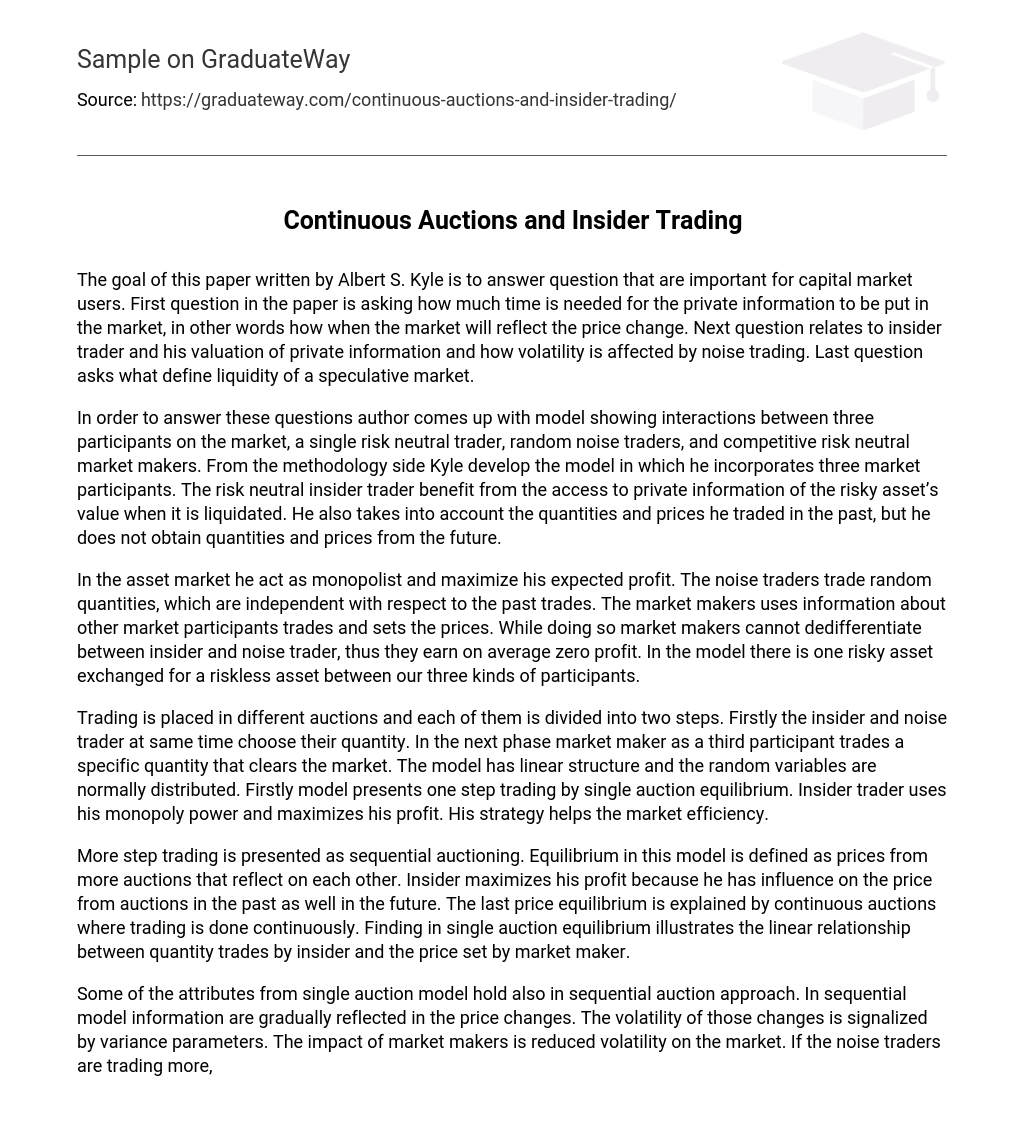The goal of this paper written by Albert S. Kyle is to answer question that are important for capital market users. First question in the paper is asking how much time is needed for the private information to be put in the market, in other words how when the market will reflect the price change. Next question relates to insider trader and his valuation of private information and how volatility is affected by noise trading. Last question asks what define liquidity of a speculative market.
In order to answer these questions author comes up with model showing interactions between three participants on the market, a single risk neutral trader, random noise traders, and competitive risk neutral market makers. From the methodology side Kyle develop the model in which he incorporates three market participants. The risk neutral insider trader benefit from the access to private information of the risky asset’s value when it is liquidated. He also takes into account the quantities and prices he traded in the past, but he does not obtain quantities and prices from the future.
In the asset market he act as monopolist and maximize his expected profit. The noise traders trade random quantities, which are independent with respect to the past trades. The market makers uses information about other market participants trades and sets the prices. While doing so market makers cannot dedifferentiate between insider and noise trader, thus they earn on average zero profit. In the model there is one risky asset exchanged for a riskless asset between our three kinds of participants.
Trading is placed in different auctions and each of them is divided into two steps. Firstly the insider and noise trader at same time choose their quantity. In the next phase market maker as a third participant trades a specific quantity that clears the market. The model has linear structure and the random variables are normally distributed. Firstly model presents one step trading by single auction equilibrium. Insider trader uses his monopoly power and maximizes his profit. His strategy helps the market efficiency.
More step trading is presented as sequential auctioning. Equilibrium in this model is defined as prices from more auctions that reflect on each other. Insider maximizes his profit because he has influence on the price from auctions in the past as well in the future. The last price equilibrium is explained by continuous auctions where trading is done continuously. Finding in single auction equilibrium illustrates the linear relationship between quantity trades by insider and the price set by market maker.
Some of the attributes from single auction model hold also in sequential auction approach. In sequential model information are gradually reflected in the price changes. The volatility of those changes is signalized by variance parameters. The impact of market makers is reduced volatility on the market. If the noise traders are trading more, than they raise market depth and so the informed traders can experience higher profits. The different trading times and the gaps between don’t allow every price. An insider trader action has an influence on market resiliency.
In contrast the continuous equilibrium model allow constant volatility because of permanently absorbed information. In result the market depth stys constant too. In this model prices follows a Brownian motion process. Resiliency of the market increases over the time. The informed traders are the one who sets prices because of positive auction correlation over time. The costs of turning around a position are almost zero. This is because the informed trader behaves like a perfectly discriminating monopolist. The profit of the informed trader is that what noise trader loose.





